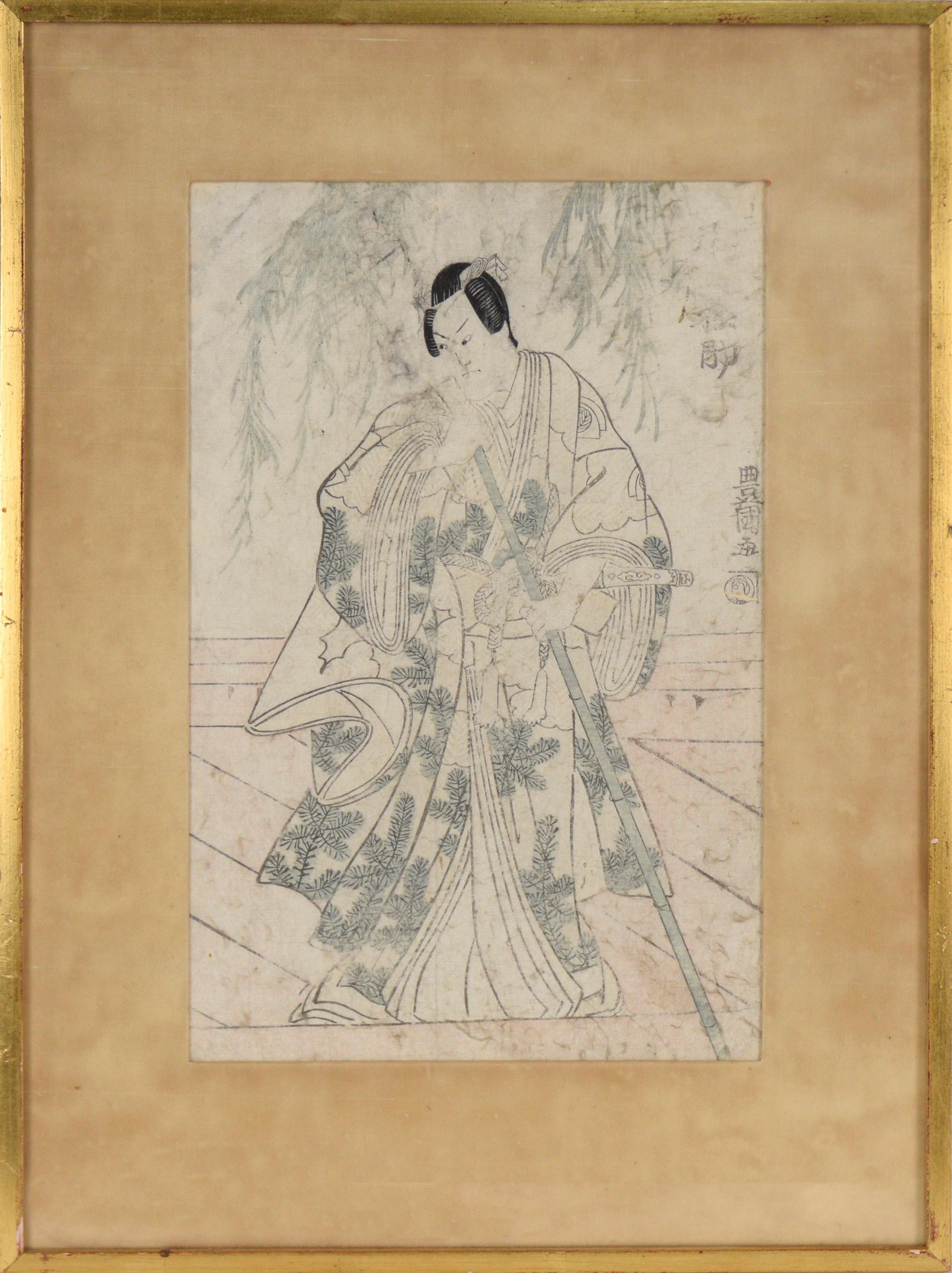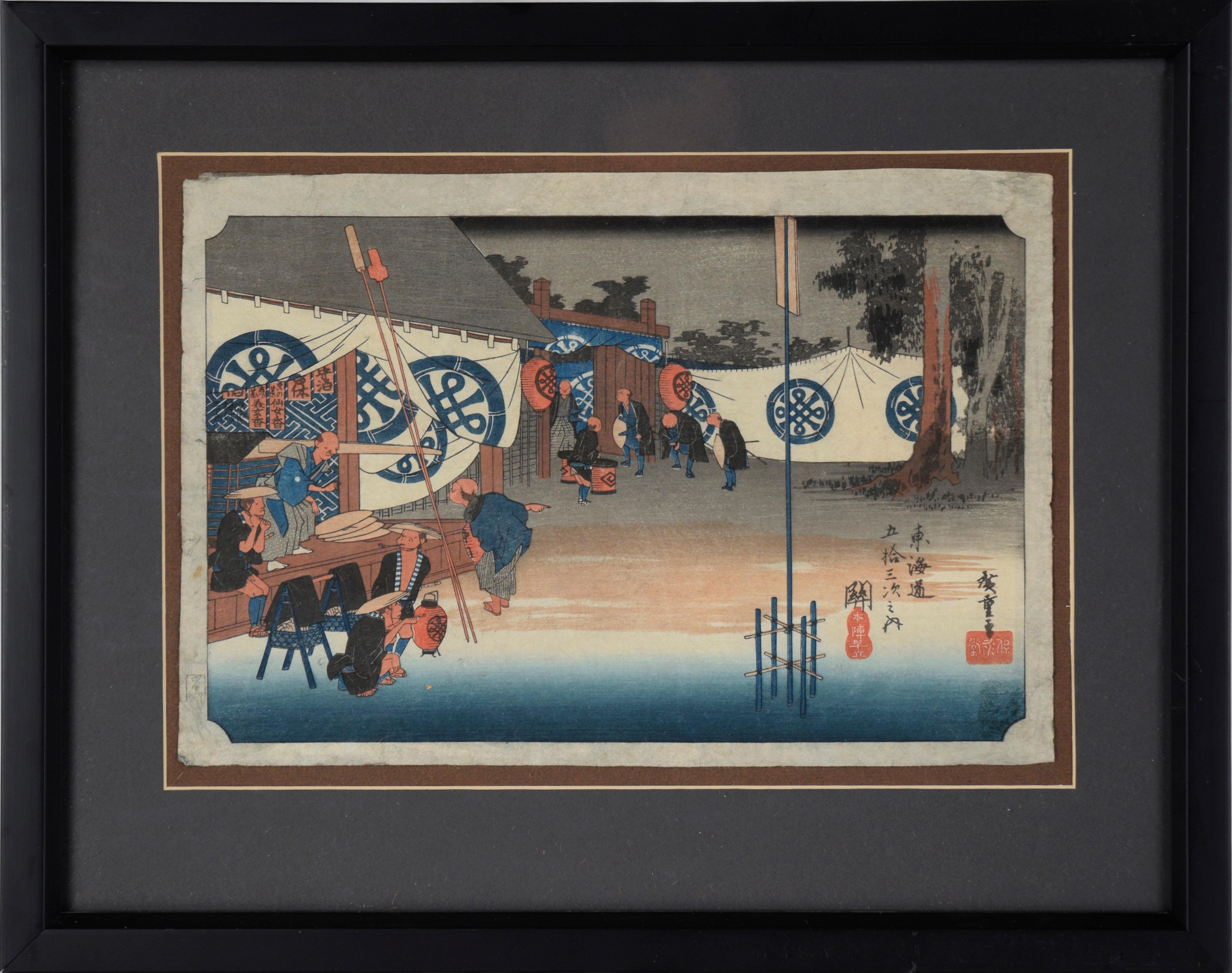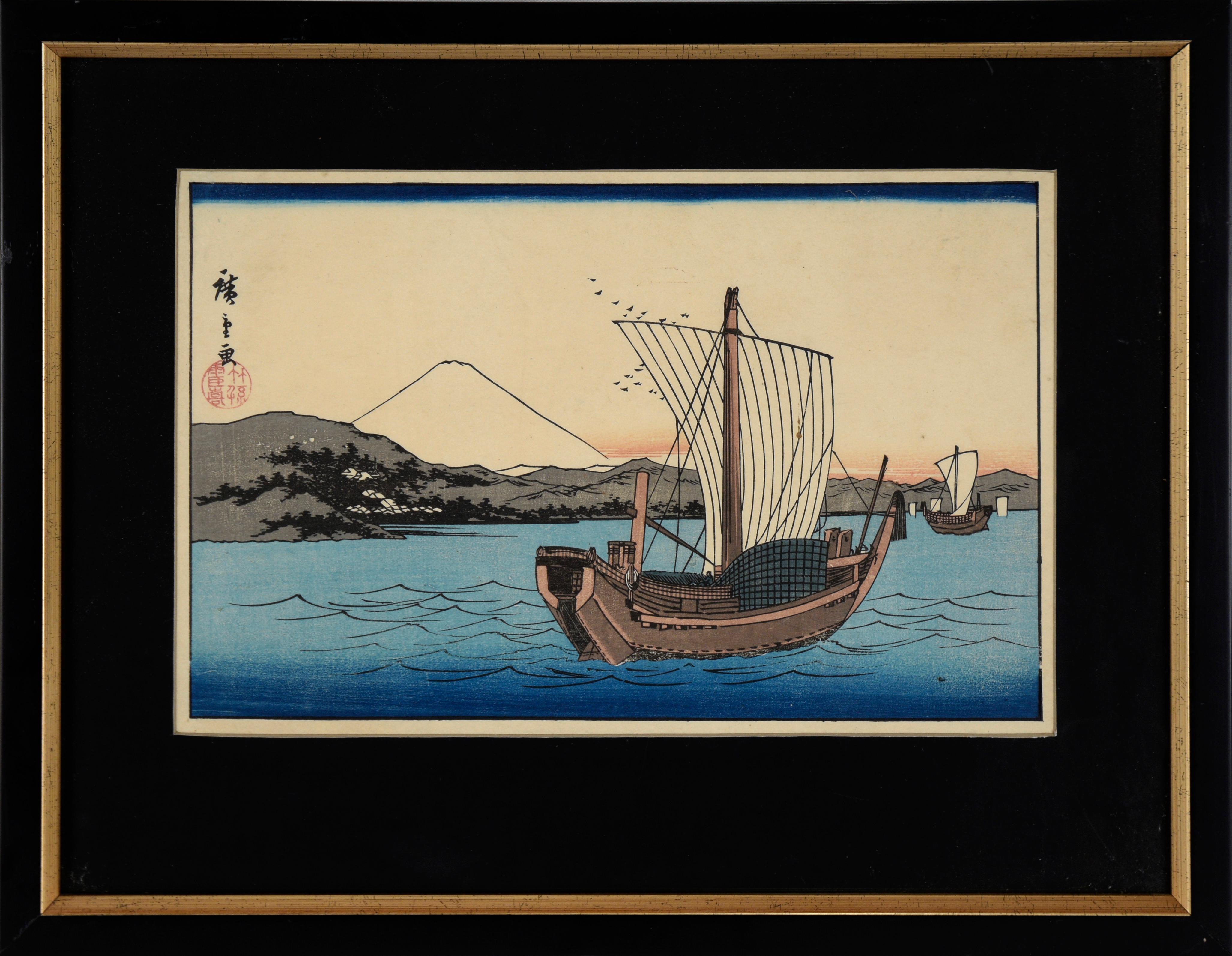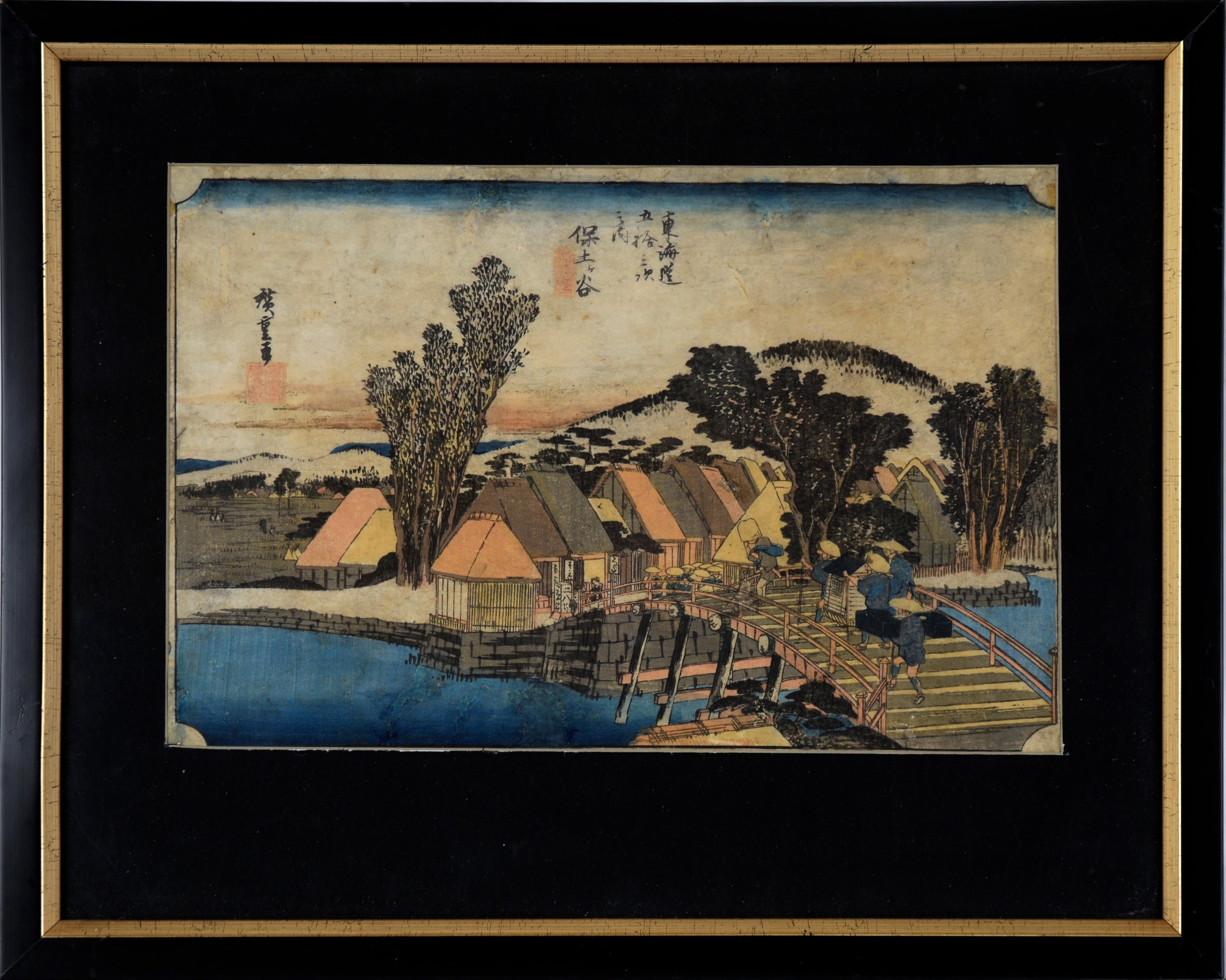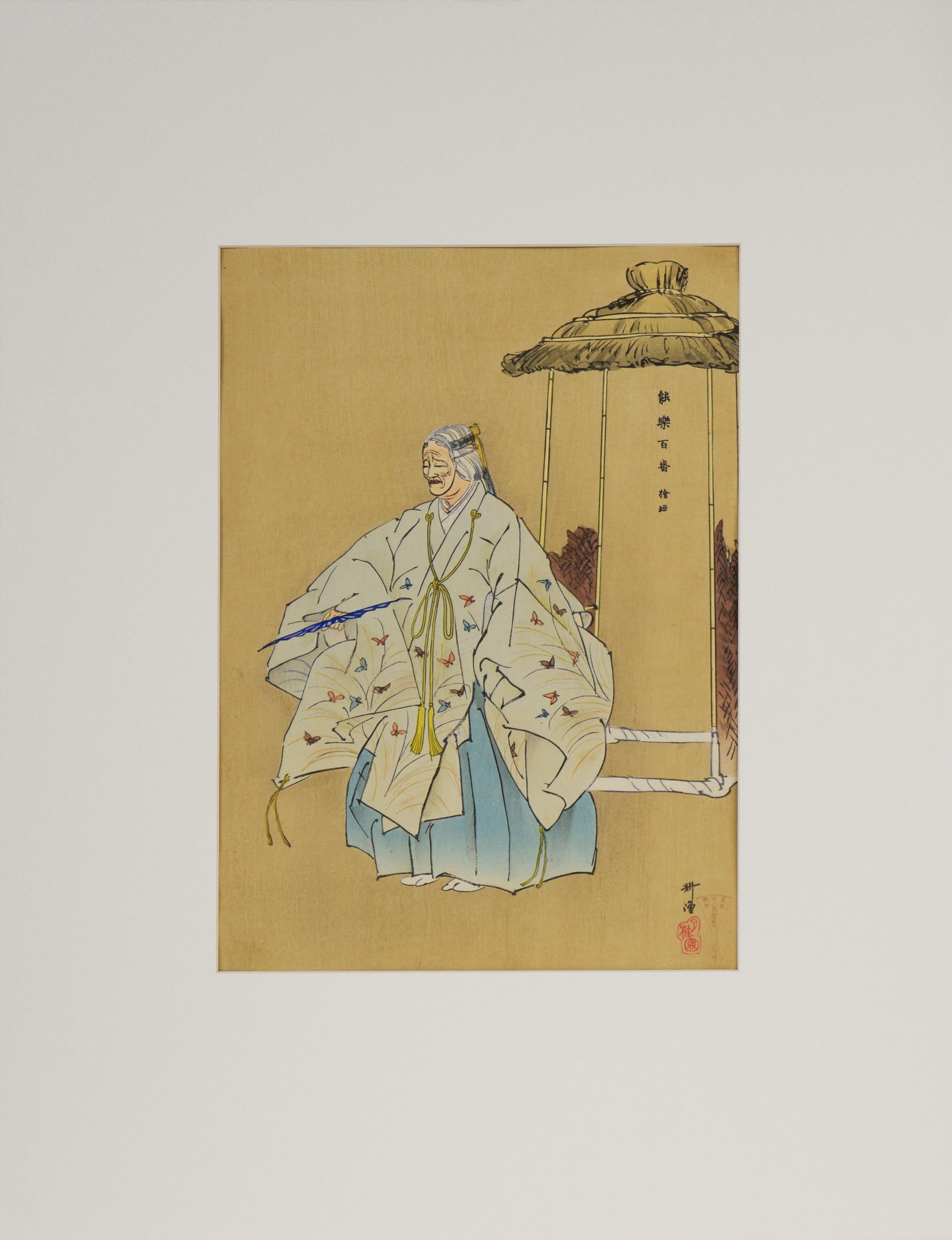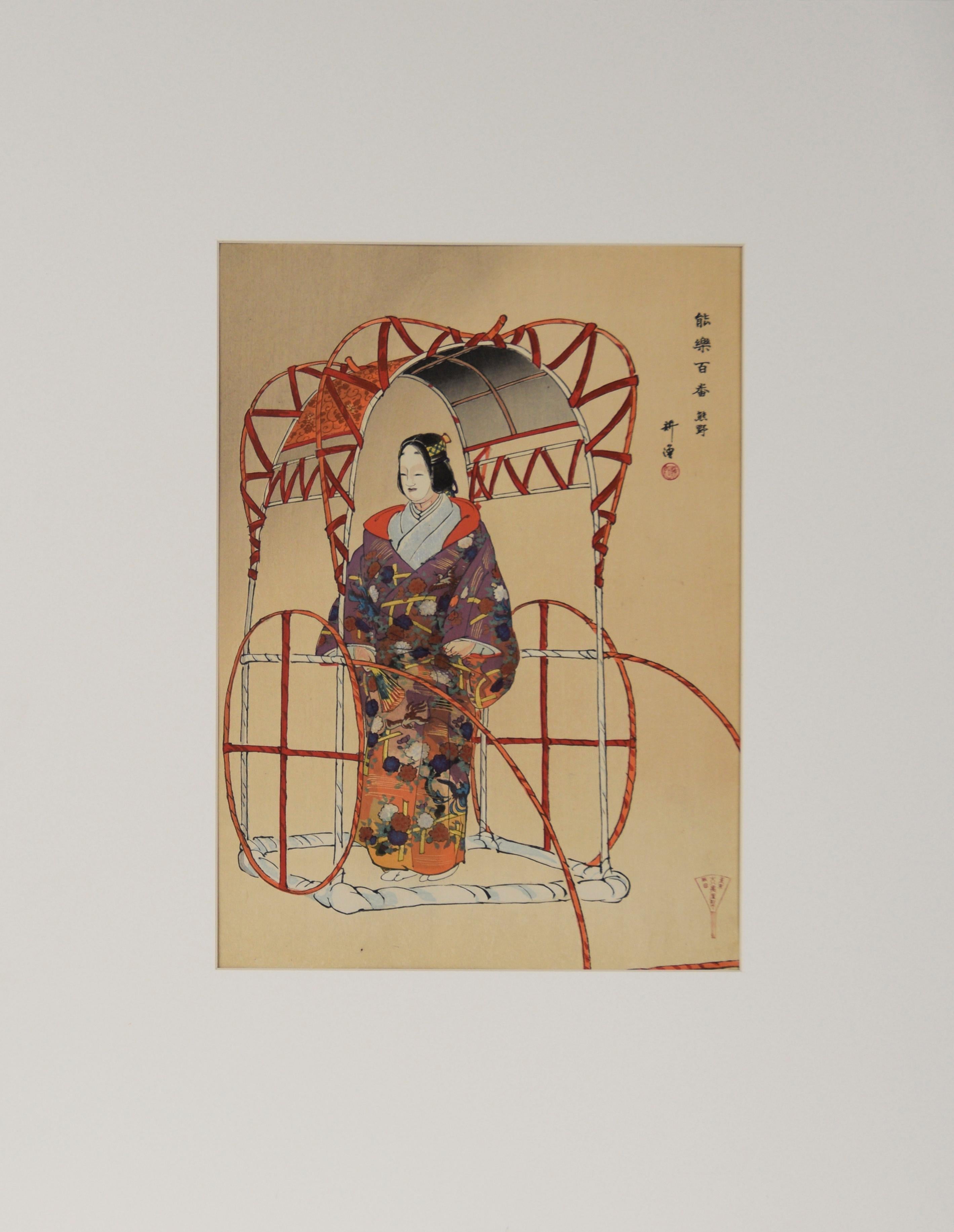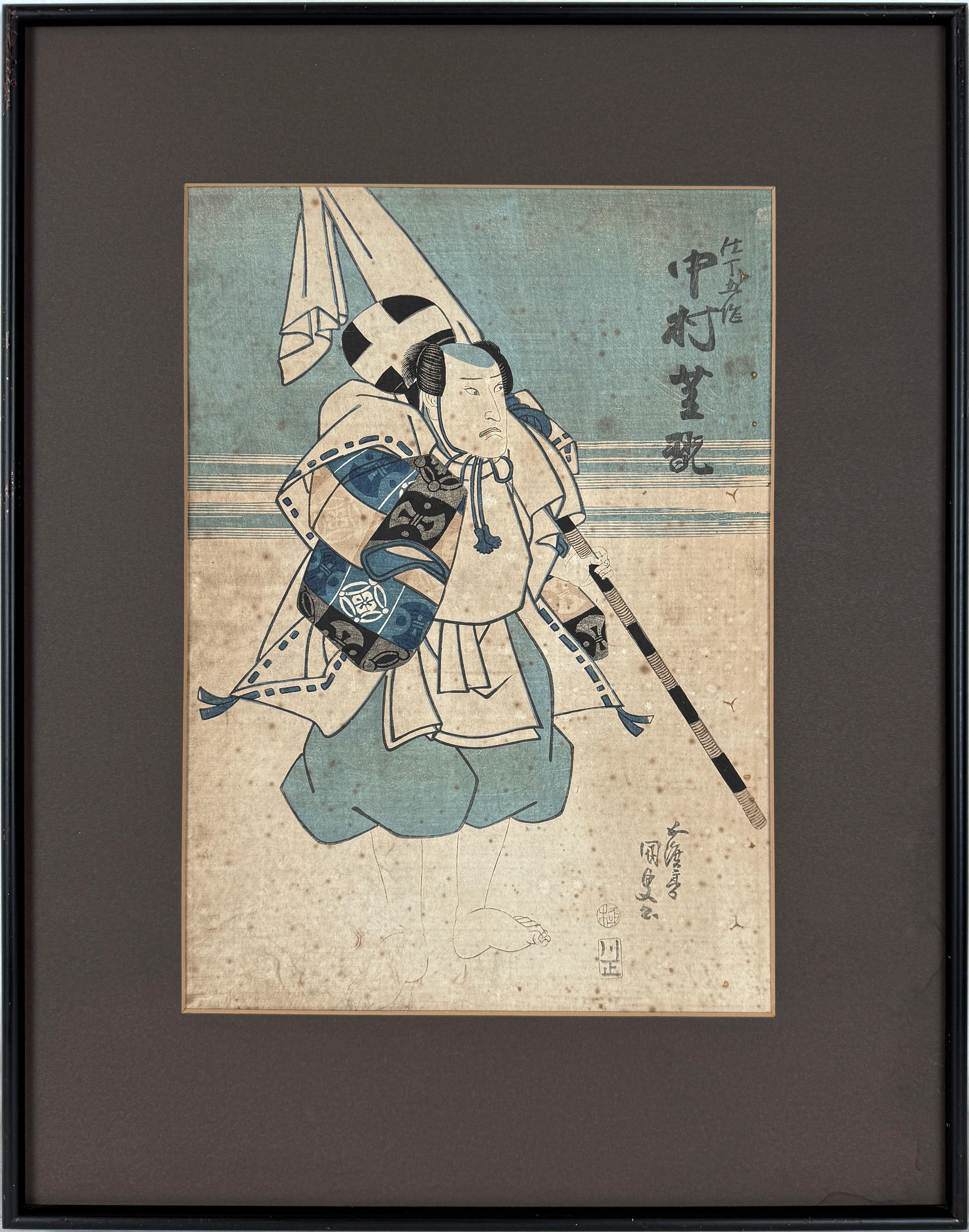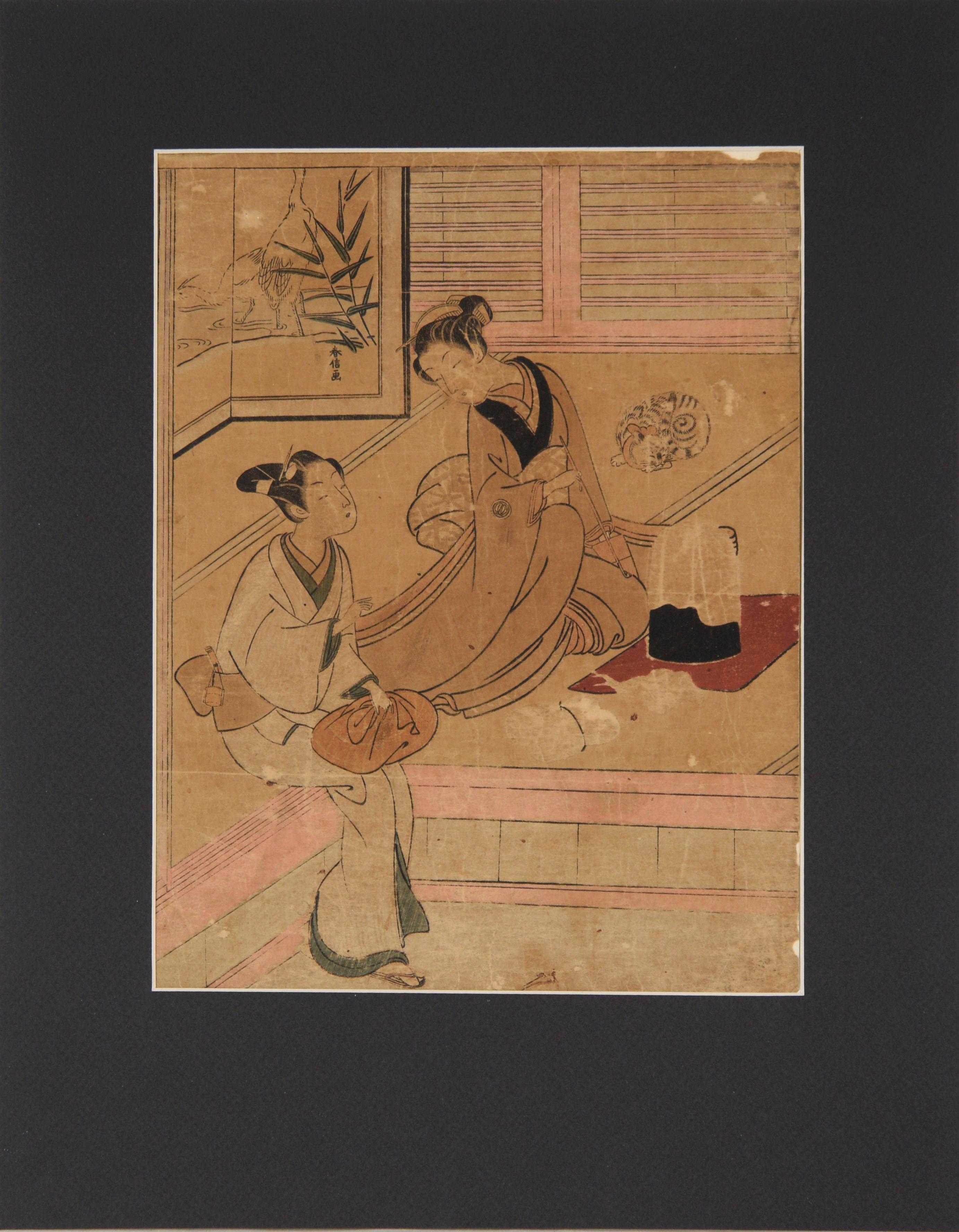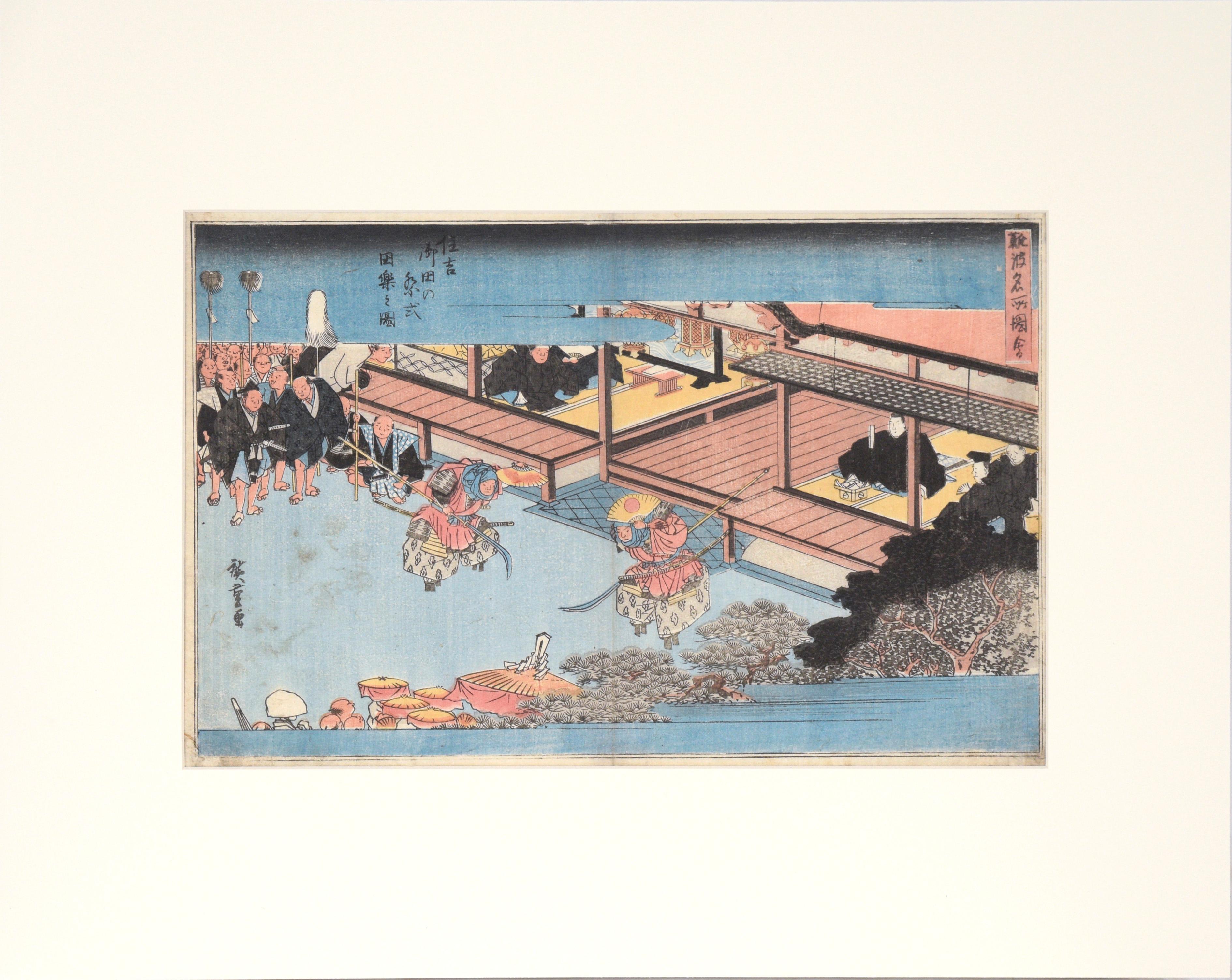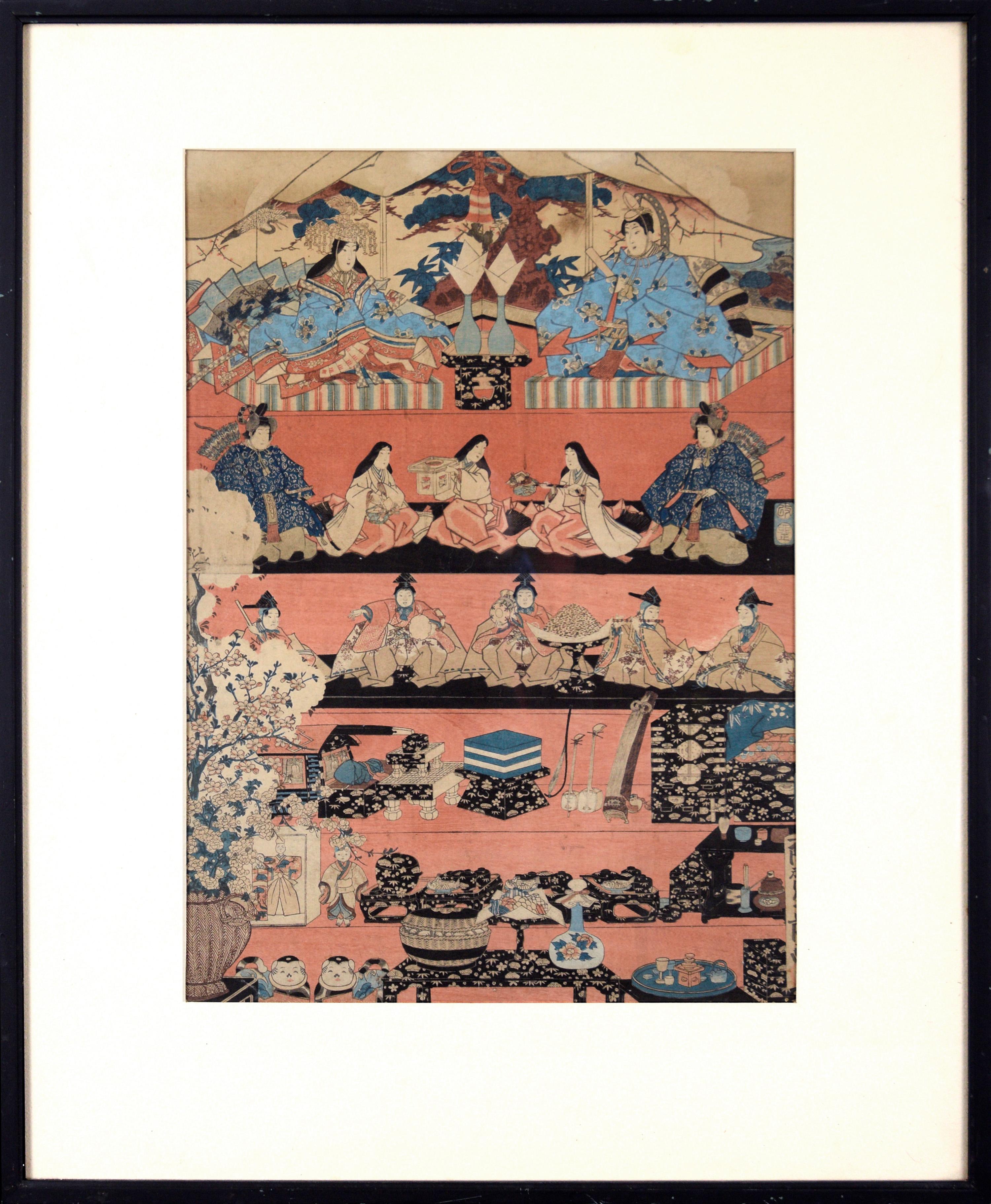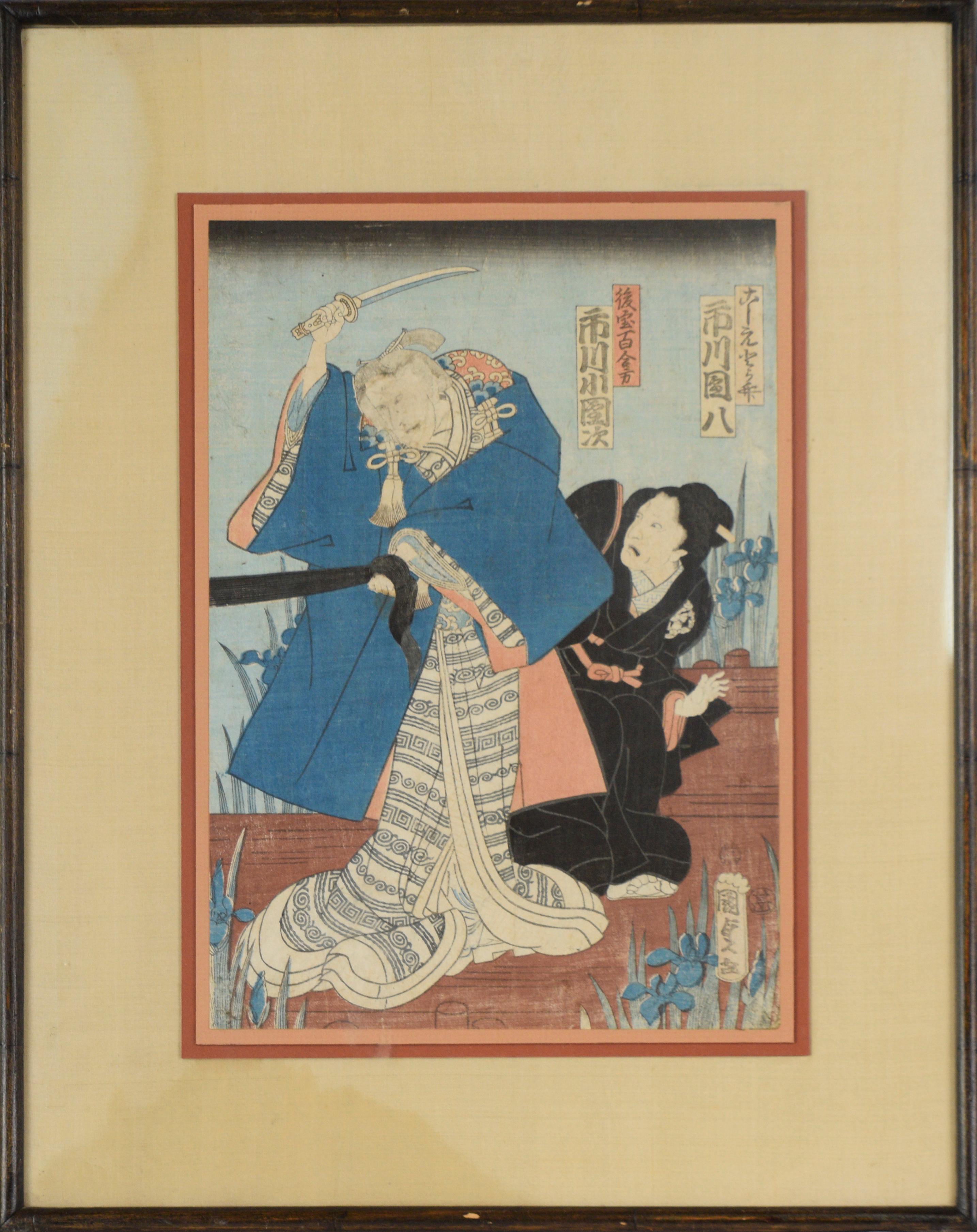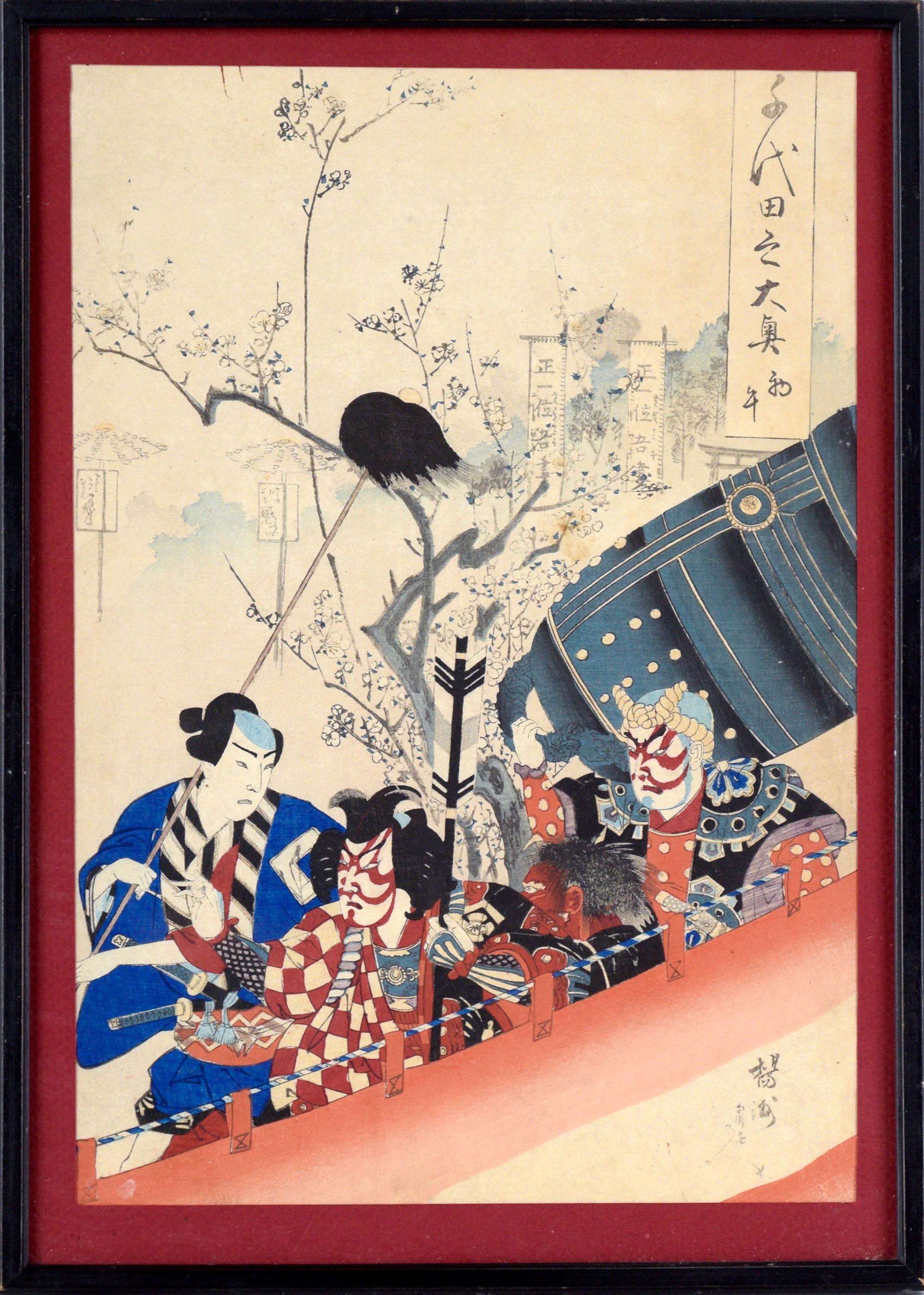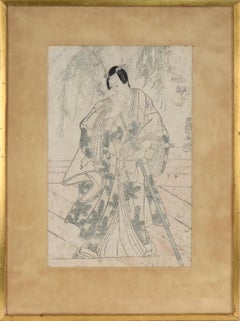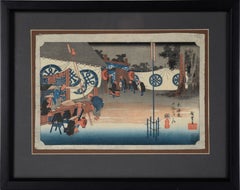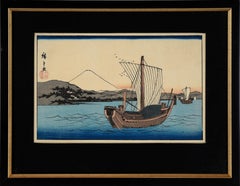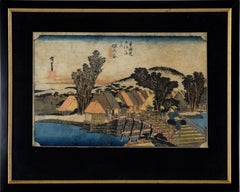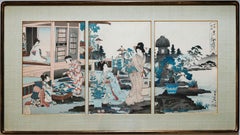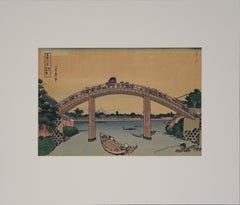
"Mannenbashi Bridge at Fukagawa" - Original 1820's Woodblock Print
Want more images or videos?
Request additional images or videos from the seller
1 of 12
Katsushika Hokusai"Mannenbashi Bridge at Fukagawa" - Original 1820's Woodblock PrintCirca 1820's
Circa 1820's
Price:$615
$1,250List Price
About the Item
- Creator:Katsushika Hokusai (Japanese)
- Creation Year:Circa 1820's
- Dimensions:Height: 18 in (45.72 cm)Width: 21 in (53.34 cm)Depth: 0.5 in (1.27 cm)
- Medium:
- Movement & Style:
- Period:
- Condition:Very good condition. Mat is new.
- Gallery Location:Soquel, CA
- Reference Number:Seller: N93291stDibs: LU54214631062
About the Seller
5.0
Platinum Seller
Premium sellers with a 4.7+ rating and 24-hour response times
Established in 1986
1stDibs seller since 2014
2,980 sales on 1stDibs
Authenticity Guarantee
In the unlikely event there’s an issue with an item’s authenticity, contact us within 1 year for a full refund. DetailsMoney-Back Guarantee
If your item is not as described, is damaged in transit, or does not arrive, contact us within 7 days for a full refund. Details24-Hour Cancellation
You have a 24-hour grace period in which to reconsider your purchase, with no questions asked.Vetted Professional Sellers
Our world-class sellers must adhere to strict standards for service and quality, maintaining the integrity of our listings.Price-Match Guarantee
If you find that a seller listed the same item for a lower price elsewhere, we’ll match it.Trusted Global Delivery
Our best-in-class carrier network provides specialized shipping options worldwide, including custom delivery.More From This Seller
View AllKabuki Actor with Pine-Patterned Robe - Japanese Woodblock Print
By Utagawa Toyokuni
Located in Soquel, CA
Kabuki Actor with Pine-Patterned Robe - Japanese Woodblock Print
Finely detailed woodblock by Utagawa Toyokuni (Japanese, 1769-1825). A kabuki actor is standing on a wooden deck, wearing a robe with a pine-needle pattern. He is holding a sword and a staff. In the background, tree branches hang down from out of frame.
Presented in a gold colored frame with a silk mat.
Frame size: 20"H x 14.25"W
Image size: 14"H x 8.5"W
Utagawa Toyokuni (Japanese, 1769-1825) was born in Edo, the son of Kurahashi Gorobei, a carver of dolls and puppets...
Category
Early 19th Century Impressionist Figurative Prints
Materials
Ink, Rice Paper, Woodcut
Stage 48 of the 53 Stages of the Tokaido - Japanese Woodblock on Rice Paper
By Utagawa Hiroshige
Located in Soquel, CA
Stage 48 of the 53 Stages of the Tokaido - Japanese Woodblock on Rice Paper
Woodblock print of clothing vendors by Utagawa Hiroshige (Japanese, 1797-1858). Originally printed in 183...
Category
1830s Impressionist Figurative Prints
Materials
Rice Paper, Woodcut
Kiyomi Barrier & Seiken Temple Near Okitsu- Japanese Woodcut Print on Rice Paper
By Utagawa Hiroshige
Located in Soquel, CA
Kiyomi Barrier & Seiken Temple Near Okitsu - Japanese Woodcut Print on Rice Paper
Woodblock print of boats in a harbor by Utagawa Hiroshige (Japanese, 1797-1858). Originally publish...
Category
1850s Impressionist Figurative Prints
Materials
Rice Paper, Woodcut
Shin-machi Bridge at Hodogaya - Japanese Woodcut Print on Rice Paper
By Utagawa Hiroshige
Located in Soquel, CA
Shin-machi Bridge at Hodogaya - Japanese Woodcut Print on Rice Paper
Woodblock print of travelers on a bridge by Utagawa Hiroshige (Japanese, 1797-185...
Category
1850s Impressionist Figurative Prints
Materials
Rice Paper, Woodcut
$1,240 Sale Price
20% Off
One Hundred Prints Of The Noh - 1925 Original Japanese Woodblock Print
Located in Soquel, CA
One Hundred Prints Of The Noh - 1925 Original Japanese Woodblock Print
Original Japanese woodblock print by Tsukioka Kogyo (Japanese, 1869...
Category
1920s Edo Figurative Prints
Materials
Ink, Rice Paper, Woodcut
"Pictures Of Noh" - 1922 Original Japanese Woodblock Print
Located in Soquel, CA
"Pictures Of Noh" - 1922 Original Japanese Woodblock Print
Original Japanese woodblock print by Tsukioka Kogyo (Japanese, 1869-1927...
Category
1920s Edo Figurative Prints
Materials
Ink, Rice Paper, Woodcut
$461 Sale Price
35% Off
You May Also Like
Women in a Garden
By Toyohara Chikanobu
Located in Austin, TX
Tohoyara Chikanobu
"Women in a Garden"
Woodcut print on Paper
Tryptich totalling 13 x 29"
Framed size 20 x 35"
The triptych of woodcut prints features a classic scene of a garden in...
Category
Late 19th Century Figurative Prints
Materials
Rice Paper, Woodcut
The Football Player, Woodcut Print on Rice Paper by Leonard Baskin
By Leonard Baskin
Located in Long Island City, NY
This woodcut print was created by American artist Leonard Baskin. Baskin is well known for his somewhat grotesque, intricate, surreal drawings and natural subject matter. This print ...
Category
1950s Surrealist Figurative Prints
Materials
Rice Paper, Woodcut
Fiorentino, Woodcut Print on Rice Paper, circa 1950 by Leonard Baskin
By Leonard Baskin
Located in Long Island City, NY
This woodcut print was created by American artist Leonard Baskin. Baskin is well known for his somewhat grotesque, intricate, surreal drawings and natural subject matter. This print ...
Category
1950s Surrealist Figurative Prints
Materials
Rice Paper, Woodcut
Dierdre, Woodcut Print on Rice Paper by Leonard Baskin
By Leonard Baskin
Located in Long Island City, NY
This woodcut print was created by American artist Leonard Baskin. Baskin is well known for his somewhat grotesque, intricate, surreal drawings and natural subject matter. This print ...
Category
1950s Surrealist Figurative Prints
Materials
Rice Paper, Woodcut
Rock n Roll Hootchie Koo
By Zane Fix
Located in East Hampton, NY
Japanese Block POP ART technique with a nude Geisha
Comes unframed
About the Artist
World-renowned guru of Jap Pop Art - Zane Fix, is an American artist, ...
Category
2010s 85 New Wave Figurative Prints
Materials
Archival Ink, Rice Paper
Seishi Ai-oi Genji – Set of 12 Shunga works together w/astrological commentary
By Utagawa Kunisada (Toyokuni III)
Located in Middletown, NY
Set of 12 woodblock prints in colors on handmade, laid mulberry paper, 6 3/4 x 10 1/4 inches (170 x 258 mm), printed in Ka-ei 4 (1851). Each print with minor handling wear, otherwise in excellent condition with bright and fresh color, and with details printed in silver ink. The images themselves contain several illusive characters indicating the publisher which are obfuscated by figures, as intended. Presented loose, as issued. A fine set.
The astrological commentary print has a large and meandering blind stamp with a bird and palm frond motif. This print lists various phrases concerning the Twelve Zodiac Animals as historically counted in Japan, and appears to include erotic commentary on the traits of people born under each of the twelve signs.
These Shunga images were issued in books that paralleled (in an erotic fashion...
Category
Mid-19th Century Edo Nude Prints
Materials
Handmade Paper, Ink, Woodcut
Recently Viewed
View AllMore Ways To Browse
Japanese Fukagawa
Antique Chinese Rice Paper Paintings
Sumo Wrestler Art
19th Century Chinese Rice Paper Paintings
Hokusai Fuji
Hokusai Wave
Wrestling Mat
Fukagawa China
Cow Cat
Damien Hirst Gold
Daphnis And Chloe
Erte Artist Proof
F Champenois
Hokusai Katsushika
Jacqueline Lamba
Japanese Tea Set 5 Piece
Kara Walker
Le Chat Noir
